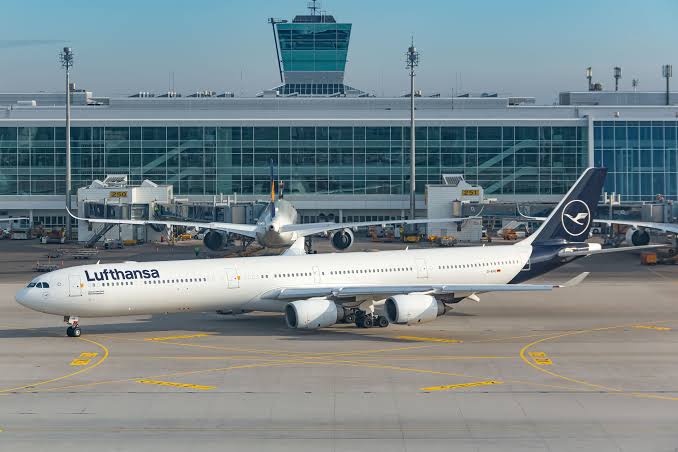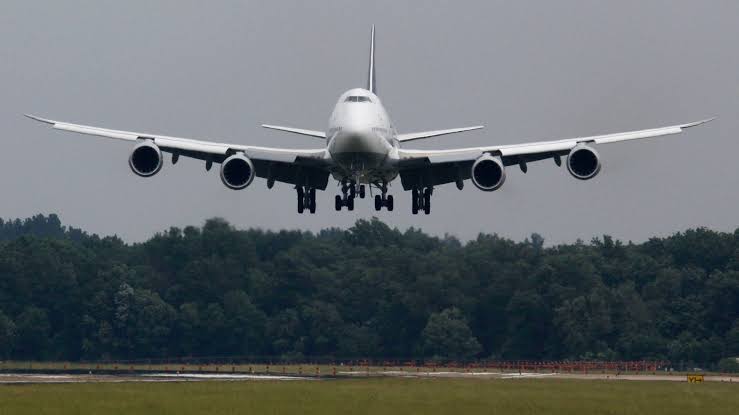Lufthansa flight diverted after pilot collapses mid-air
incapacitated captain as the crew issued a distress call. Due to weather concerns, the aircraft was rerouted to Montreal, where it landed safely after a fuel dump.
Passengers were rebooked, and Lufthansa assured that safety remains a top priority. The airline has not disclosed the captain’s current condition.A Lufthansa flight from Miami to Germany made an emergency landing in Montreal on January 19 after the captain lost consciousness mid-flight. The Boeing 747-8i, flight LH463, was diverted while over the Atlantic, with the senior first officer taking control.
Lufthansa Flight Diverted After Pilot Collapses Mid-Air
Montreal, Canada – January 19, 2025
A Lufthansa long-haul flight was forced to make an emergency landing after the captain reportedly collapsed mid-flight, prompting quick-thinking crew members to divert the aircraft to safety. The incident has once again raised questions about pilot health monitoring, in-flight emergency protocols, and the resilience of airline safety systems.
The Incident
Lufthansa Flight LH463, a Boeing 747-8, departed from Miami International Airport on its scheduled overnight journey to Frankfurt, Germany. The flight had over 300 passengers and crew on board. Roughly an hour into the journey, while cruising at altitude, the captain of the aircraft reportedly lost consciousness in the cockpit.
According to passengers and internal airline reports, the captain began to feel unwell shortly after takeoff. While no distress signal was initially issued, the situation escalated rapidly when the captain fainted while seated at the controls. The co-pilot, seated next to him, quickly assumed full control of the aircraft and declared a medical emergency to air traffic control.
Flight attendants were called to assist and successfully removed the incapacitated captain from the cockpit to administer first aid in the crew rest area. A registered nurse who was among the passengers reportedly assisted in monitoring the captain’s vital signs until the aircraft landed.
Emergency Diversion
Following protocol, the co-pilot and the remaining cockpit crew evaluated their options. Although Frankfurt was the original destination, the circumstances demanded a diversion to the nearest major airport capable of handling a Boeing 747. Weather conditions were also deteriorating over the North Atlantic, further influencing their decision.
The aircraft made a sharp turn northward and diverted to Montréal-Pierre Elliott Trudeau International Airport in Quebec, Canada. After a coordinated approach, the aircraft landed safely around three hours after departure. Emergency medical services were on standby and immediately boarded the plane to attend to the ailing pilot, who was then transported to a nearby hospital for evaluation.
Passenger Experience
For passengers on board, the situation caused anxiety but was largely handled in a calm and professional manner. According to social media posts and interviews conducted after landing, the cabin crew informed passengers of the diversion without causing panic.
One passenger described the scene as “orderly, but tense,” noting that the crew remained calm throughout and made regular announcements to keep everyone informed.
Another passenger recounted, “We knew something was wrong because the seatbelt signs came on quickly and the aircraft changed course. But the crew handled it well. Only later did we find out the captain had passed out.”
Passengers were rebooked on later flights to Frankfurt or accommodated in nearby hotels while Lufthansa made arrangements to get everyone to their final destinations.
Official Response
Lufthansa confirmed the medical emergency in an official statement, saying:
> “Lufthansa Flight LH463 from Miami to Frankfurt was diverted to Montreal due to the sudden illness of a crew member. The aircraft landed safely, and the affected pilot was taken to a local hospital for medical evaluation. Passenger and crew safety is always our top priority, and the situation was handled according to standard safety procedures.”
The airline did not provide additional details about the pilot’s current condition, citing privacy reasons.
Aviation Safety Protocols
Commercial pilots undergo rigorous training to handle a wide range of in-flight scenarios, including the incapacitation of a fellow pilot. Regulations in both Europe and the United States require that at least two fully qualified pilots be in the cockpit at all times during flight. In the event that one becomes incapacitated, the remaining pilot is trained to operate the aircraft and make emergency decisions, such as diverting to the nearest airport.
The flight’s successful diversion highlights the effectiveness of these protocols.
“It’s exactly why we train for these scenarios,” said aviation safety expert and former airline pilot James Rowe. “When one crew member becomes incapacitated, the other is fully trained and legally authorized to take over, ensuring the safety of the aircraft and all souls on board.”
Medical Monitoring of Pilots
This incident has renewed attention to the medical fitness of commercial airline pilots. In both Europe and North America, pilots must undergo regular medical examinations to maintain their flight certification. Typically, airline pilots under the age of 40 must pass a Class 1 medical exam annually. After 60, the frequency increases to every six months.
However, some medical conditions, such as heart issues or sudden-onset illness, can occur with little warning, even between exams. In recent years, several high-profile incidents have occurred involving pilots who fell seriously ill or even died during flights, though such occurrences remain extremely rare.
In 2024, a Turkish Airlines captain died mid-flight during a long-haul flight from Seattle to Istanbul. In 2019, a Jet2 pilot fainted in the cockpit during a flight from Manchester to Madeira, also prompting an emergency landing.
How Rare Is Pilot Incapacitation?
Statistically, pilot incapacitation is extremely uncommon. According to the U.S. Federal Aviation Administration (FAA), such events occur on fewer than 1 in 34,000 commercial flights. Most are minor and involve temporary conditions like dehydration or migraines, and rarely result in loss of consciousness.
Nonetheless, airlines prepare extensively for such scenarios. Commercial aircraft cockpits are always staffed by at least two pilots, and in long-haul international flights like LH463, a third relief pilot is often present to allow rest rotations. It is unclear if a third pilot was aboard LH463, though Lufthansa typically staffs its long-haul 747 flights with a relief pilot.
Passenger Rights and Compensation
Under EU Regulation 261/2004, passengers affected by flight diversions and delays may be entitled to compensation, depending on the cause and delay duration. However, exceptions exist in cases of “extraordinary circumstances,” including medical emergencies. It remains to be seen whether passengers on LH463 will receive compensation or only travel accommodations.
Passengers were provided with meals, hotel stays where applicable, and rebooking options. Lufthansa has a reputation for professional handling of such incidents and is expected to address passenger concerns accordingly.
Investigation and Next Steps
The Canadian Transportation Safety Board (TSB) and German aviation authorities are expected to review the incident as a matter of standard procedure, although no foul play or technical faults are suspected. Lufthansa is conducting its own internal review to ensure all procedures were followed correctly and to gather more information about the captain’s condition.
The name and age of the captain have not been released, though sources indicate he is an experienced pilot with over 20 years at Lufthansa.
Conclusion
The incident aboard Lufthansa Flight LH463 serves as a reminder of the unpredictable nature of air travel and the importance of safety protocols, crew training, and medical preparedness. Thanks to the swift action of the co-pilot and the professionalism of the cabin crew, a potentially catastrophic situation was avoided.
While passengers experienced delays and discomfort, the outcome could have been far worse had the crew not acted as effectively as they did. As the aviation industry continues to place a high premium on safety, incidents like these will only reinforce the need for rigorous training and thorough health screening for those who shoulder the immense responsibility of flying commercial aircraft.






